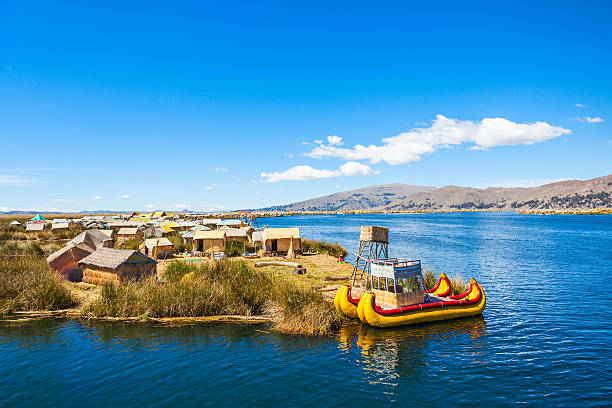
Ultimate Guide to Fiesta de la Virgen de la Candelaria in Copacabana, La Paz
Every February, Copacabana ignites with the Fiesta de la Virgen de la Candelaria, an intense cultural spectacle set against the breathtaking backdrop of Lake Titicaca. From energetic traditional dances to challenging hikes up Cerro Calvario, this festival invites travelers to engage deeply with Bolivian heritage and rugged Andean landscapes.
Acclimate Before Festival Activities
Spend at least one day in Copacabana before engaging in strenuous activities to adjust to the high altitude (3,800m). This reduces risks of altitude sickness during the festival and hikes.
Wear Sturdy Footwear
Cobblestone streets and uneven trails require shoes with solid grip and ankle support to safely enjoy the festival and surrounding hikes.
Stay Hydrated
The dry, thin air dehydrates quickly—carry water and drink frequently, especially when out in the sun or climbing Cerro Calvario.
Start Hikes Early
Plan hikes like Cerro Calvario in the morning when temperatures are cooler and crowds smaller for a safer, more peaceful experience.
Ultimate Guide to Fiesta de la Virgen de la Candelaria in Copacabana, La Paz
Every February, Copacabana, perched on the southern shore of Lake Titicaca, shifts from a quiet town to a vibrant stage for the Fiesta de la Virgen de la Candelaria. This festival merges fervent devotion with a fierce celebration of Andean culture, drawing thousands of pilgrims and travelers who come to witness spectacular dances, intricate costumes, and pulsating music that rolls over the hills like thunder. The environment itself challenges and welcomes you: the air thins at 3,800 meters, each breath a reminder of the Andes’ firm grip.
For adventurous visitors, experiencing the festival means navigating crowded plazas where the sacred and secular collide in colorful chaos. Vibrant dancers clad in layered skirts spin under the fierce high-altitude sun, their movements choreographed to ancient rhythms that seem to embolden the mountains themselves. Along the shore, Lake Titicaca’s waters ripple with the wind’s whispers, daring you to explore by boat after the day’s festivities.
Practical considerations are key. The festival lasts about ten days, so plan lodging early—budget hotels fill fast. Comfortable footwear is essential for navigating cobblestone streets and uneven terrain. February’s weather is generally mild during the day but cools sharply at night, so layered clothing guards against temperature swings. Staying hydrated is critical; the altitude works harder than your legs, and the dry air steals moisture quickly.
The festival offers more than spectacle. Several processions wind through Copacabana’s streets, showcasing a blend of indigenous and Catholic traditions. Watch for the dance groups representing different Bolivian regions, each bringing distinct rhythms and costumes infused with historical significance. Vendors offer local foods like quinua-based dishes and trout fresh from the lake, grounding your experience in the region’s unique flavors.
If you’re up for adventure, take the hike up Cerro Calvario. It’s a steep 1.5-kilometer climb with around 300 meters elevation gain that presents a rugged yet accessible challenge. The path is rocky and uneven but rewarded by panoramic views of Copacabana and Lake Titicaca—a visual echo of the festival’s energy below. Bring trekking poles for better balance and start early to avoid the midday sun.
In sum, the Fiesta de la Virgen de la Candelaria in Copacabana is a vibrant, sensory ignition of culture and nature. It demands practical preparation but offers deep rewards—a chance to witness an ancient Andean spirit fiercely alive and inviting.
Nearby Trips
All Adventures
Boat Charters
Water Activities
Adventures near Copacabana, La Paz
Discover the unique and memorable adventures that make Copacabana, La Paz special.
Frequently Asked Questions
What is the significance of the Fiesta de la Virgen de la Candelaria?
The festival honors the Virgin of Candelaria, blending Catholic traditions with indigenous Andean customs. It celebrates faith, harvest, and community through dance, music, and ritual.
How crowded does Copacabana get during the festival?
The town fills with thousands of pilgrims and tourists, especially around the main plaza and church. Expect busy streets and book accommodations well in advance.
Is the Cerro Calvario hike suitable for beginners?
The hike is moderate, with a significant elevation gain of around 300 meters over 1.5 kilometers. Beginners with reasonable fitness can manage it, but pacing and acclimatization are important.
Are there local foods unique to the festival period?
Yes, vendors often sell dishes featuring quinua and freshly caught lake trout. These foods showcase Copacabana’s connection to both land and lake.
What wildlife might I see around Copacabana during the festival?
Birdwatchers can spot species like the Andean gull and giant coot near the lake. The festival’s noise drives most wildlife to quieter areas, but early mornings offer better viewing.
Are there any environmental concerns for visitors?
Visitors should respect local waste management rules and avoid damaging fragile high-altitude flora. Stick to marked trails, especially on Cerro Calvario, to prevent erosion.
Recommended Gear
High-traction hiking shoes
Supports ankle stability and grip on cobblestone streets and rocky trails.
Layered clothing
Manage the sharp temperature shifts between warm days and cool nights.
Sun protection (hat, sunscreen)
Critical for protecting skin against intense UV rays at high altitude.
Water bottle or hydration system
Prevents dehydration in dry Andean air during festival activities and hikes.
Local Insights
Hidden Gems
- "Mirador Kuntur Wasi, a less frequented viewpoint offering sweeping views of Lake Titicaca and Copacabana beneath the festival’s roar."
- "The quiet Isla de la Luna, reachable by boat, offers a peaceful alternative to the busy town."
Wildlife
- "Andean gulls patrol the lake’s edge with purposeful sharpness."
- "Giant coots, with their robust bodies, stride through the shallow waters like guardians of the shore."
History
"Copacabana’s devotion to the Virgen de la Candelaria dates back to colonial times, merging indigenous worship with Christian elements. The festival’s dance groups preserve pre-Columbian archaeology and folklore through their costumes and movements."
